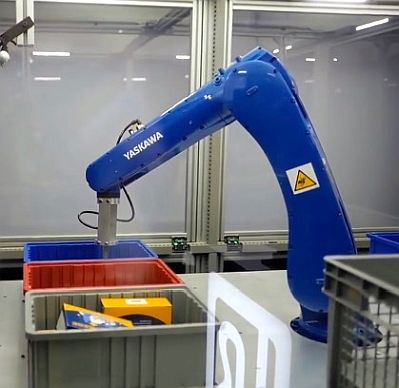What's NEXT? Yaskawa Motoman's New AI-Powered Robotic Automation System
Opening the door for the next stage of robotic automation, leveraging machine learning and artificial intelligence (AI) for more intelligent robotic systems, Yaskawa has launched the Motoman NEXT platform for use in North American markets.

Created through cooperation between Yaskawa Electric Corporation and a network of industry and technical partners, this next-generation robot platform is the first in the industrial robot sector to have autonomous adaptivity and an open development environment that facilitates increased communication and expandable functionality to equip robots with the ability to execute challenging tasks autonomously in unstructured environments.
Extending Yaskawa's solution concept of i³-Mechatronics, Motoman NEXT serves to realize an integrated, intelligent and innovative approach to industrial automation through the harnessing of digital data and the utilization of mechatronic solutions such as high-performance robots and servo drives.
"This new hardware architecture provides autonomous adaptivity to an environment, expanding robotic deployment into previously unautomated areas," says Chris Caldwell, Product Manager for Yaskawa America Inc. -- Motoman Robotics Division (Yaskawa Motoman). "The ability to leverage cutting-edge technology with AI processing allows for more intuitive robot utilization with human-like perception, enabling information and work to be structured as conscious flow for extremely productive operations."

A key component of Motoman NEXT is a lineup of dedicated manipulators. Ranging in payload capacity from 4 kg to 35 kg, seven robot models are available. Five industrial robots (NEX4, NEX7, NEX10, NEX20, and NEX35) are joined by two collaborative robots (NHC12 and NHC30), with each robot utilizing the extremely compact YNX1000 controller.
Motoman NEXT robots are powered by NVIDIA Isaac accelerated libraries and AI models, running on NVIDIA Jetson Orin autonomous control units (ACUs) with Wind River Linux. This combination provides integrated AI processing and human-like decision-making for each robot, creating more intelligent systems capable of achieving higher levels of autonomy.
Want more information? Click below.
Rate this article
View our terms of use and privacy policy ::m::